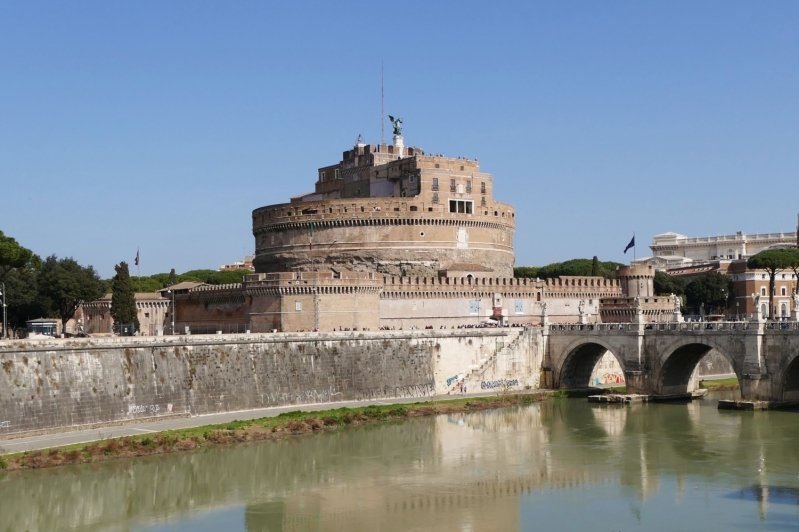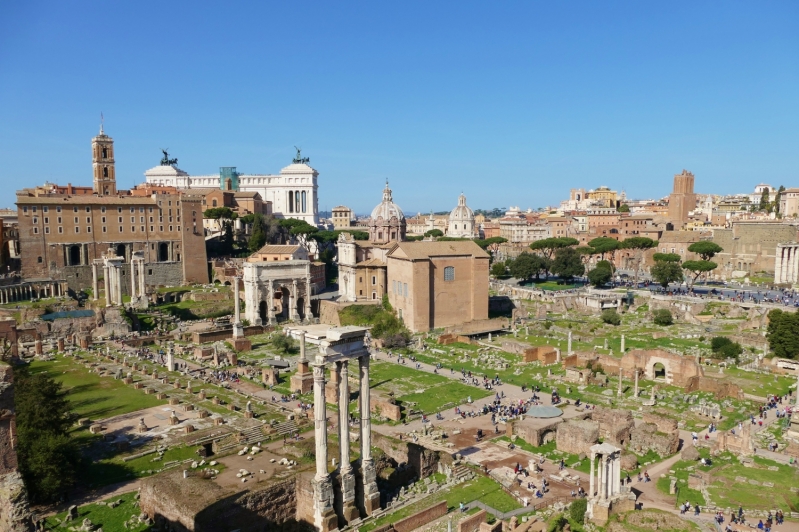
Few cities can rival Rome’s astonishing artistic heritage. Throughout history, the city has starred in the great upheavals of Western art, drawing top artists and inspiring them to push the boundaries of creative achievement. At WNO, we know that Italy’s capital city wouldn’t be complete without opera.
Rome’s premier opera house, Teatro Costanzi, boasts a dramatic red and gold interior and am impressive history: it premiered both Mascagni’s Cavalleria rusticana and Puccini’s Toscawhich has three real Roman locations for its three acts, Sant’ Andrea della Valle, Palazzo Farnese and Castel Sant’ Angelo.
Welsh National Opera first performed Verdi’s Il trovatore 69 years ago, on 30 April 1951 at the Prince of Wales Theatre, but the opera was premiered on 19 January 1853 at the Teatro Apollo. The theatre, in Rome’s Tor di Nona neighbourhood, was sadly swept away by the river Tiber at the end of the 19th century. This event ended a key episode in Roman artistic history as it used to be the home of the best company in town.

The premiere of Il trovatore was not just successful, it was an unmitigated triumph. On the night of the third performance, in an echo of the success of Macbeth in Florence, Verdi was escorted back to his hotel surrounded by an ecstatic crowd carrying torches. Underneath the balcony of his room, a band played a selection of music from his operas.
Another opera to have enjoyed such widespread and continued popularity is Rossini’s The Barber of Seville, the oldest opera by an Italian composer never to have disappeared from the repertoire. The opera was also premiered in Rome, on 20 February 1816, and our much-loved production, which you can see on stage later this year, was first performed 34 years ago, on 6 May 1986 at the New Theatre.
Even as Rossini signed the contract for a new comic opera at Rome’s Teatro Argentina in December 1815, circumstance was working against him. A major problem was the existence of a certain well-loved comic opera composed some 30 years previously by Giovanni Paisiello and entitled The Barber of Seville. The opening-night audience reacted unfavourably to Rossini’s new version, but on the second night its brilliance won them over. Verdi considered it the most beautiful opera buffa (comic opera) ever written.

Other composers to be inspired by Rome include Georges Bizet, best known for his opera Carmen, who studied in the city for three years after winning the Prix de Roma in 1857. He spent more than a decade working intermittently on his Symphony No 2, entitled Roma, but he was never truly happy with it, which is why the piece is rarely performed today. Der Rosenkavalier’s composer Richard Strauss first visited Italy in 1886. The two first movements of his symphonic fantasy Aus Italien (From Italy) are enchanting portrayals of the countryside around Rome and the city’s ruins.
This weekend we encourage you to sit back and listen to some fantastic music inspired by the Eternal City. Why not treat yourself to a generous bowl of pasta or a nice glass of wine while you’re at it? You know what they say … when in Rome!



